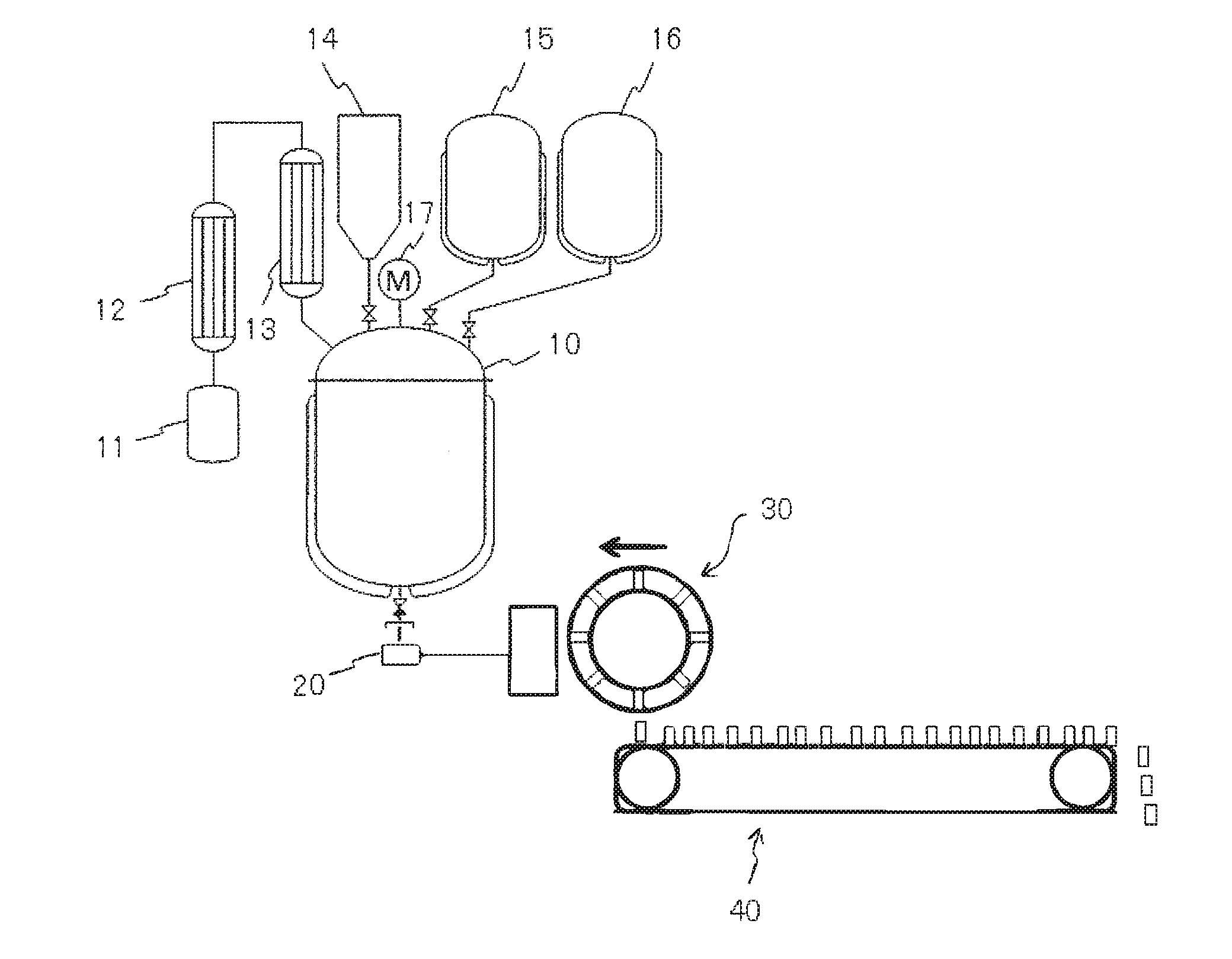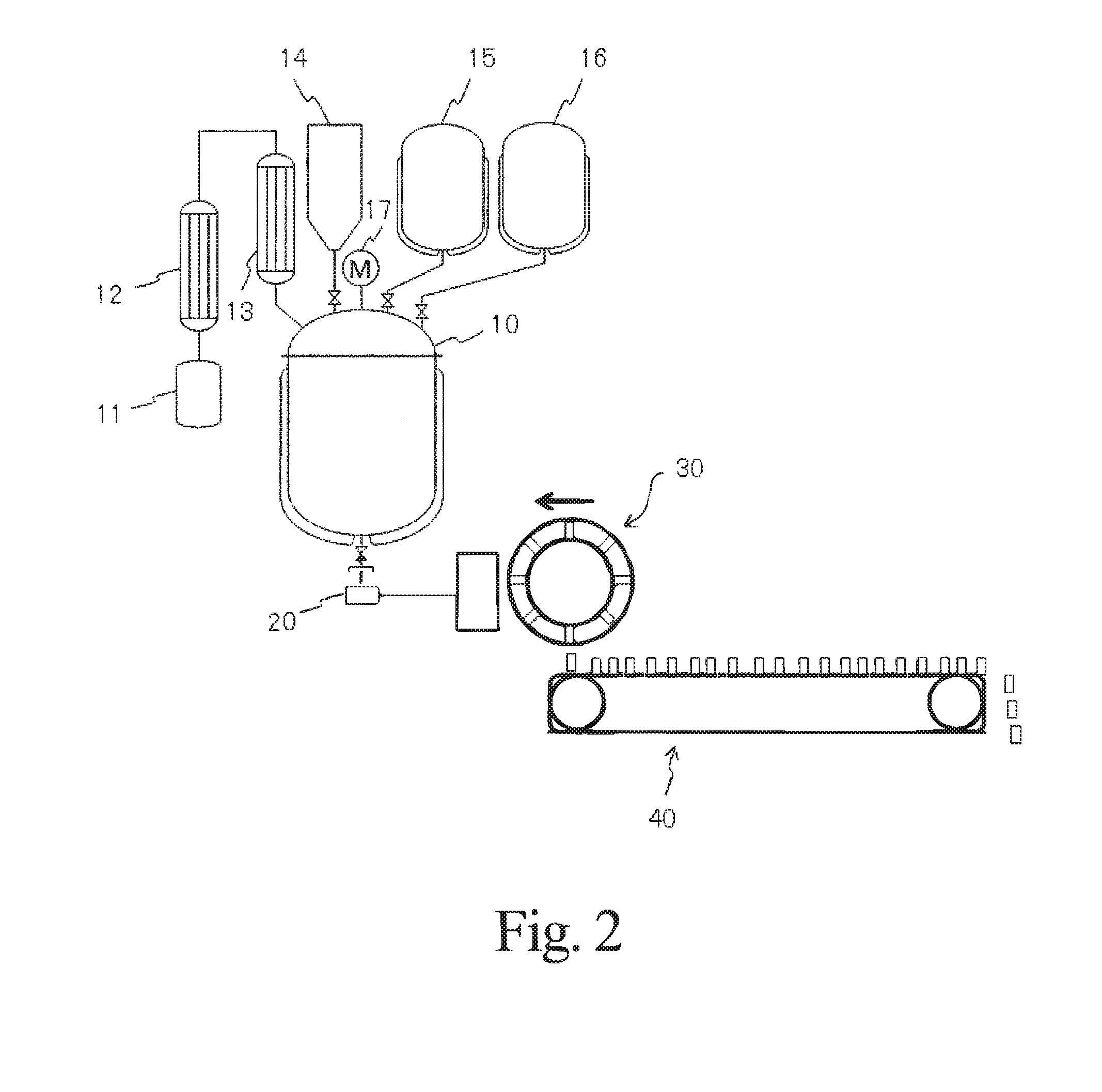Method for granulating polyamide or polyamide composition
a polyamide and composition technology, applied in the direction of granulation on conveyor belts, etc., can solve the problems of damaging the granulated pellets, hard to remove the granules from the cooling belt without a special device, etc., and achieve the effect of low viscosity, stably producing and small variation in shap
- Summary
- Abstract
- Description
- Claims
- Application Information
AI Technical Summary
Benefits of technology
Problems solved by technology
Method used
Image
Examples
example 1
[0169]Accurately weighed 13000 g (88.95 mol) of adipic acid, 11.29 g (0.11 mol) of sodium hypophosphite and 5.85 g (0.07 mol) of sodium acetate were put into a pressure-proof melt polymerization vessel having an internal volume of SOL and equipped with an agitator, a partial condenser, a total condenser, a pressure regulator, a thermometer, a drop tank, a pump, an aspirator, a nitrogen introducing pipe, a bottom discharge valve and a strand die. After sufficient nitrogen substitution, the melt polymerization vessel was sealed to keep the pressure inside the melt polymerization vessel to 0.4 MPaG and elevate the temperature to 170° C. while agitating.
[0170]Once 170° C. was reached, 11077 g (86.45 mol) of metaxylylene diamine (feed molar ratio of diamine component / dicarboxylic acid component (MXDA / AA)=0.9720) stored in the drop tank was dropped into the molten raw material in the melt polymerization vessel, the pressure inside the melt polymerization vessel was kept at 0.4 MPaG, and t...
example 2
[0179]Other than the feed molar ratio of diamine component / dicarboxylic acid component (MXDA / AA) was 0.9619 to obtain “Polyamide No. 2”, granulating was carried out in the same manner as Example 1. The results are shown in Table 1.
example 3
[0180]Other than the feed molar ratio of diamine component / dicarboxylic acid component (MXDA / AA) was 0.9537 to obtain “Polyamide No. 3”, granulating was carried out in the same manner as Example 1. The results are shown in Table 1.
PUM
| Property | Measurement | Unit |
|---|---|---|
| Pressure | aaaaa | aaaaa |
| Concentration | aaaaa | aaaaa |
| Molecular weight | aaaaa | aaaaa |
Abstract
Description
Claims
Application Information
 Login to View More
Login to View More - R&D
- Intellectual Property
- Life Sciences
- Materials
- Tech Scout
- Unparalleled Data Quality
- Higher Quality Content
- 60% Fewer Hallucinations
Browse by: Latest US Patents, China's latest patents, Technical Efficacy Thesaurus, Application Domain, Technology Topic, Popular Technical Reports.
© 2025 PatSnap. All rights reserved.Legal|Privacy policy|Modern Slavery Act Transparency Statement|Sitemap|About US| Contact US: help@patsnap.com



